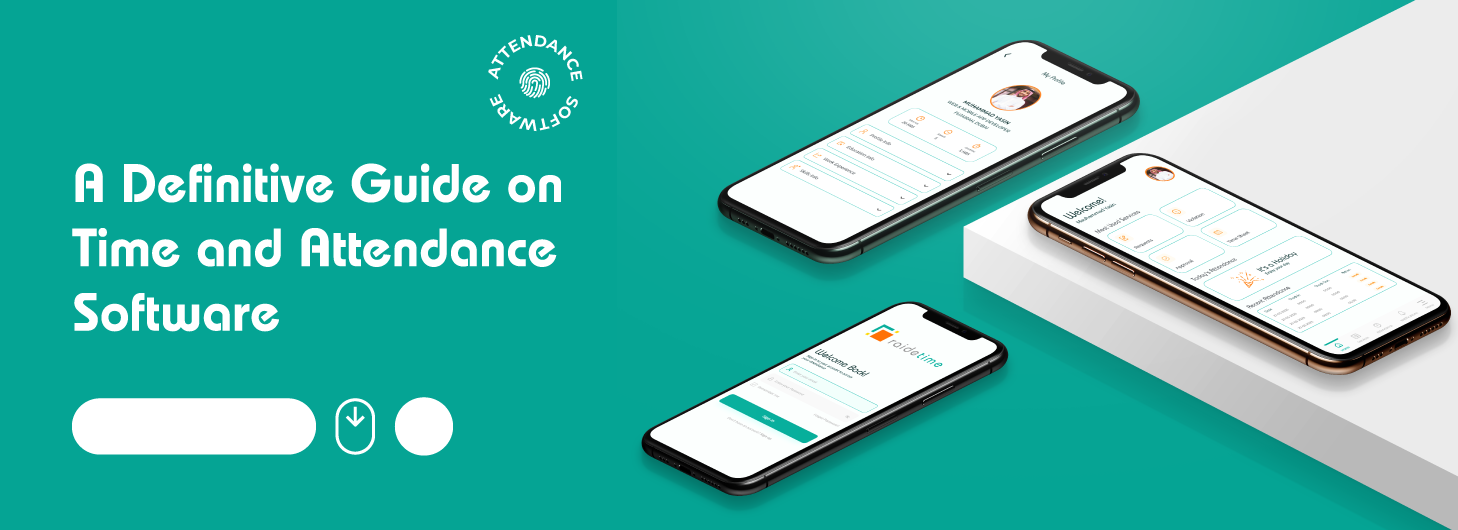Written By
Kalim Ullah
2025-Feb-03
Top 5 Time and Attendance Challenges Faced by HR Managers
Every HR
manager knows the frustration of managing messy attendance records, manually
tracking leave balances or payroll discrepancies due to inaccurate data. Such
challenges drain precious time and create dissatisfaction among employees and
hamper overall productivity.
This blog
will cover the top five time and attendance challenges faced by HR managers,
coupled with actionable solutions for minimizing them. Efficient time and
attendance monitoring optimizes employee satisfaction, labor law compliance, and
simple workforce management.
Why
Time and Attendance Management is Important?
Suppose time
and attendance management as the backbone of HR operations. While it does not
attain much media attention, but it is an important factor in earning employee
trust, producing productivity, and overall organizational efficiency.
According to
a survey released by SHRM, close to 49%
of employees have had pay roll errors at some stage of
their career. Such errors are not mere numbers in a spreadsheet, they
constitute breach of trust. Employees disengage the moment they perceive that
their pay or attendance records are inaccurate, lowering morale.
A gap in labor laws may draw heavy penalties
upon the organization which may also tarnish its reputation. Properly tracking
time assures compliance, minimizes risk, and increases the perception of
fairness in the organization.
But why is managing time and attendance so
complex? Let’s look into some of the most pressing HR challenges and how to
overcome them.
1:
Tracking Attendance Accurately
Inaccurate attendance tracking does not only
have operational ramifications but directly impacting on payroll, compliance,
and employee satisfaction. Manual errors, buddy punching, and obsolete systems
are the most common issues. These challenges erode trust and create unnecessary
workloads for HR teams.
Solution:
Enter biometric systems and automated time tracking tools. These tools, using unique physical
characteristics such as fingerprint or facial recognition, evade the buddy
punching risk and maintain accuracy. For instance, companies with biometric
systems stated a reduction in attendance
disputes by 20% in just the first year.
Besides, mobile apps interfaced with these
systems grant employees remote clocking in-without compromising flexibility and
accuracy. Imagine replacing long and boring spreadsheets with real-time
data-saves hours of work and enhances reliability.
But making tracking accurate is just one of
the hurdles. Shift management creates a whole different set of headaches.
2:
Managing Shift Schedules and Staffing Issues
More than managing shift schedules gives nightmares
to healthcare facilities. The retail and manufacturing industries and
hospitality are also equally bothered by it. Bad scheduling means burnout and
turnover for overworked employees. Gallup shows
that 53%
of employees who are consistently put in conflict over scheduling leave within
a year.
Solution:
Automated scheduling software is a game
changer. These tools consider employee availability, skills, and compliance
requirements, creating optimized schedules in minutes. For instance, Starbucks’ use of
automated scheduling improved employee satisfaction and reduced turnover
significantly.
Beyond automation, empowering employees to
swap shifts via apps ensures flexibility. This not only alleviates
administrative pressure, but it also increases morale because employees feel
they are in control of their schedules.
3:
Leave and Absence Management
Suppose peak retail season with two critical
employees taking unplanned leave, the balance of the team struggles under the
workload, causing missed deadlines and unhappy customers. Such scenarios
highlight the cascading effects of poor leave management.
Manual leave tracking is quickly meanwhile an
old way of tracking leaves. It frustrates both employees and managers as it
consumes time and creates inconsistencies. According to a survey, unplanned
absences are costing U.S.
companies $3,600 per year for each hourly employee. These costs aren’t just financial, they
impact team dynamics and productivity.
Solution:
Modern HR systems run leave management in
conjunction with attendance tracking to make things easier. Employees can use a
self-service portal to submit their requests while managers see their
availability in real time.
Clear leave policies are equally important.
Transparent communication about accruals, carryovers, and blackout dates
ensures fairness and reduces conflicts. Think about an environment where leave
requests are approved within hours not days, that’s the power of automated
systems.
But leave management isn’t the only area
where HR teams face hurdles. Ensuring compliance with labor laws adds another
layer of complexity.
4:
Ensuring Compliance with Labor Laws
Non-compliance with labor laws can have
severe consequences. Tracking overtime is critical, as failure to track
overtime correctly may lead to lawsuits and fines. The U.S. Department of Labor
in 2022 alone recovered over $213
million
in back wages for workers due to violations of wage regulations. To contribute
to the ever-changing scope of HR law-labor regulations regarding overtime, meal
breaks, etc.-is truly a full-time job! Any single infraction can incur a hefty
cost on the company and drive down its image.
Solution:
Compliance tools integrated with time and attendance systems simplify this task. These tools flag
potential violations, track overtime thresholds, and generate reports for
audits.
Proactive training for managers also helps. Organizations
can foster a culture of compliance by educating their employees about labor
laws. Such a culture builds trust and reduces risks. An HR dashboard for
tracking attendance and compliance with the law is a look into the future of
compliance.
Time and attendance systems are compliance
tools, but they are much more powerful when integrated with the greater HR
ecosystem.
5:
Integrating Time and Attendance with Other HR Functions
In many organizations, HR functions are
carried out in silos. Time tracking in one system, payroll in another, and
performance reviews in yet another. This disconnection creates inefficiencies
and increases errors.
For example, synchronizing payroll will not
be done in human resources if attendance data fails to sync. Therefore, the
hours worked must be reconciled manually-a tedious process full of errors. These
inefficiencies cost time and money, hindering strategic initiatives.
Solution:
Integrated HR systems bridge these gaps.
Platforms like Raidetime Now
seamlessly connect time tracking, payroll, and performance management. It
validates correct decisions and gives HR teams actionable insights. For
example, analytics in real-time can help identify trends in absenteeism for
proactive intervention.
Just think about a situation where attendance
records change payroll automatically, and performance data for training
programs. Such high integration propels the HR function toward being a
strategic partner instead of just being the administration function.
The
Human Aspect of Time and Attendance Management
Technology may have all these great
solutions, but the human side is equally important. Employees must feel they
are systems designed with their interest in mind.
For example, biometric systems improve
accuracy but may raise privacy concerns. Transparent communication about data
usage can alleviate fears and build trust. Involving employees in the selection
of new tools guarantees better acceptance and satisfaction.
Time and attendance management is about
making sure all processes are right, but the focus should be on creating an
atmosphere of appreciation and empowerment.
Time and attendance management isn't just a
logistical necessity but a strategic win too. It addresses problems such as
accurate tracking, efficient shift scheduling, leave management, compliance,
and integration, helping HR managers reconcile the realities of change while
ensuring a more cheerful and productive workforce.
Using the latest technology and co-creating a
culture of trust and transparency therein lies the secret. With the correct
approach, HR teams can transform these challenges into avenues for growth-
giving further credibility to the statement that even the hardest problems have
simple, effective solutions.
Also subscribe
our Newsletter to
get weekly insights and strategies into your inbox to streamline your
workforce management!



